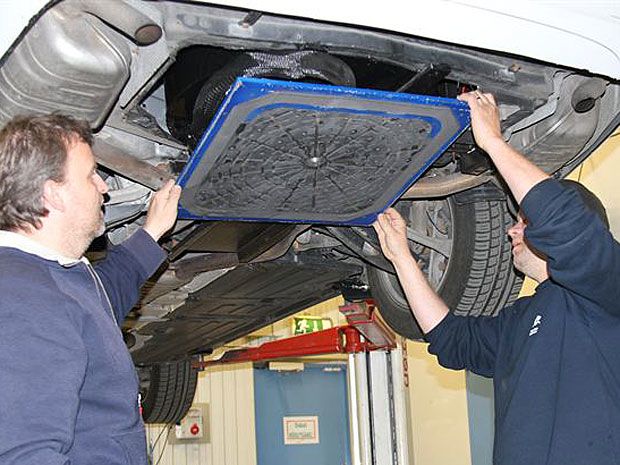Autoliv's Automated Emergency Brake Works Almost Too Well
To avoid hurting the car's occupants, the system can be triggered only at sedate speeds
How much good is a faster-than-human automated braking system if the brakes themselves take a long time to bring the vehicle to a halt? To really exploit such emergency “collision avoidance” systems, cars need big-foot brakes that work right now.
Sweden's Autoliv has demonstrated a radical way to do it. Under the chassis, there hangs a large metal plate that can shoot to the pavement in a fraction of a second, establishing a vacuum that exerts 15,000 newtons of force. The company says this can reduce braking distance by as much as 40 percent.
Feast your eyes:
The company doesn’t give a spec sheet, but from the video it seems that the brake moves under pneumatic pressure, applied through flexible tubes. Maybe the source is a solid propellant, like the kind used in airbags.
The vacuum brake works almost too well. If you’re going fast enough, it might stop so short that your seat belts squish your internal organs to jelly. So Autoliv expects that its brake would operate only at speeds below 70 kilometers per hour (40 mph).
Of course, there may be a dark cloud attached to this silver lining. Young drivers with immature forebrains might be tempted to force such “emergency” stops just for the roller-coaster thrill of it, with who knows what ill effects on their lives (and on road maintenance). And if the car directly behind you isn’t also equipped with superbrakes, the frontal collision you avoid may be offset by a rearender.
The lawyers may enjoy tackling the novelty of such puzzles in liability law, but they will have to make do with a lot fewer cases—and income. Each new step toward automated driving reduces the accident rate, the traffic-law violation rate, the auto-insurance business, and the revenues to all concerned in such matters.
Philip E. Ross is a senior editor at IEEE Spectrum. His interests include transportation, energy storage, AI, and the economic aspects of technology. He has a master's degree in international affairs from Columbia University and another, in journalism, from the University of Michigan.
